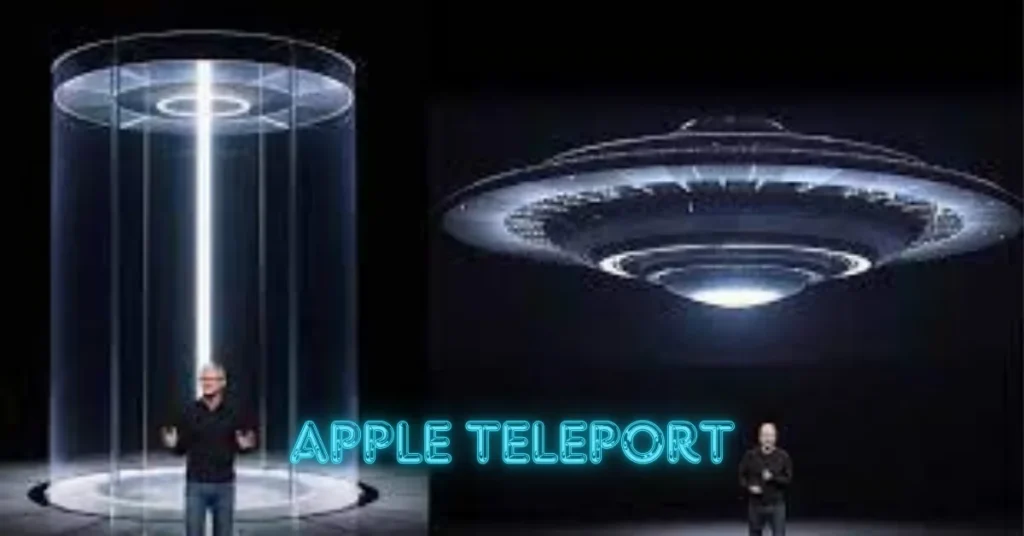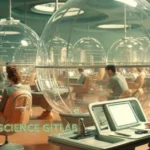Introduction to Apple Teleport and its alleged features
Imagine a world where you could step into a device and instantly arrive at your destination, no matter how far away it is. This concept has long captivated our imaginations through science fiction novels and blockbuster films. Now, with the buzz surrounding Apple Teleport, that dream might be closer than ever to reality.
Rumors are swirling about this groundbreaking technology developed by one of the world’s most innovative companies. What exactly does Apple Teleport promise? Are we on the brink of teleportation becoming part of our everyday lives? In this blog post, we’ll explore the features associated with Apple Teleport and separate fact from fiction in its development journey.
Join us as we dive deep into not just what makes teleportation so fascinating but also its potential implications for society and the economy. The future may be more extraordinary than we ever thought possible!
History of teleportation in science fiction and real-life technology
Teleportation has long captured the imagination of writers and scientists alike. From early science fiction tales to modern blockbusters, the concept of instant travel defies the laws of physics.
In literature, H.
G. Wells introduced teleportation in “The Time Machine,” planting seeds for future explorations. Star Trek popularized it further with its iconic transporters, turning fiction into a cultural phenomenon.
Meanwhile, real-life attempts at teleportation have emerged from quantum mechanics. Scientists have achieved quantum state transfer over short distances using entangled particles. This groundbreaking research hints at possibilities previously confined to stories.
Despite these strides, practical applications remain elusive. The gap between fictional marvels and scientific reality is still vast. Yet both realms continue to inspire each other in fascinating ways as technology evolves rapidly.
The potential impact of Apple Teleport on society and the economy
The advent of Apple Teleport could revolutionize how we view transportation. Imagine instant travel across vast distances with a simple command. The implications for daily commutes and long-distance travel are staggering.
Economically, businesses may thrive as logistics costs plummet. Overnight deliveries would become almost obsolete, reshaping supply chains globally. Retailers could reach customers without physical stores, leading to new economic models.
Socially, the impact on personal relationships would be profound. Families separated by geography might reunite in an instant. Cultural exchanges could flourish as people move seamlessly between countries.
However, this shift might also disrupt industries reliant on traditional transport methods. Airlines and railways could face significant declines in business revenue.
As communities adapt to these changes, urban planning will need to evolve drastically too. Cities designed around current transportation models will require rethinking for efficient integration of teleportation hubs into daily life.
Criticisms and concerns surrounding the development of Apple Teleport
The concept of Apple Teleport has sparked significant debate. Critics raise concerns about the safety and security of such technology. Imagine the risk if teleportation could fall into the wrong hands.
Privacy issues also loom large. How do we ensure that personal data isn’t compromised during a teleport? The potential for misuse is unsettling.
Moreover, there are ethical implications to consider. Would teleporting people create disparities in access? Who gets to use it first, and at what cost?
Environmental impact cannot be ignored either. Rapid advancements often come with unintended consequences on our planet’s ecosystem.
Skeptics question whether any company should hold this kind of power over physical presence and mobility. There’s a lot at stake when discussing something as transformative as teleportation technology.
Alternatives to teleportation technology
While the concept of teleportation is captivating, several existing technologies offer alternatives for fast and efficient travel.
Virtual reality (VR) has emerged as a game-changer in how we connect with others. Users can immerse themselves in lifelike environments without leaving their homes. VR offers unique experiences that bypass physical relocation entirely.
Drones are another innovative solution enhancing delivery services. They speed up logistics by transporting goods across short distances quickly. This technology could revolutionize urban planning and consumer behavior.
Hyperloop systems also promise to reshape transportation dynamics. By using magnetic levitation to propel pods through low-pressure tubes, these systems could drastically reduce travel times between cities.
Advancements in autonomous vehicles present a practical approach to mobility challenges. Self-driving cars are becoming more sophisticated, offering convenience and efficiency on our roads without needing human intervention.
Examining the possibility of Apple Teleport becoming a reality
The concept of Apple Teleport ignites curiosity and imagination. Could it truly become a reality?
Recent advancements in quantum physics hint at possibilities once thought impossible. Researchers are making strides, exploring methods that resemble the science behind teleportation. Meanwhile, tech giants like Apple have resources to invest in groundbreaking research.
Yet, challenges abound. The complexity of matter disassembly and reassembly poses significant hurdles. Current technology isn’t equipped for such feats without major breakthroughs.
Public perception also plays a role. Trust is paramount when discussing anything that could involve personal safety during transport across vast distances.
If there’s one thing history has shown us, it’s that innovation often emerges from unexpected places. Whether or not Apple Teleport materializes remains uncertain, but the conversation around its potential continues to evolve rapidly.
difference between Fact vs. Fiction
Fact and fiction often intertwine, creating a compelling narrative that can captivate audiences. Facts are grounded in reality, supported by evidence and research. They stand the test of scrutiny over time.
Fiction, on the other hand, thrives on imagination. It bends rules and explores possibilities beyond our current understanding. Writers create worlds where anything is possible—like teleportation.
When discussing concepts like Apple Teleport, distinguishing between what’s plausible and what’s purely speculative becomes crucial. People may envision groundbreaking technology but must remain aware of its feasibility.
The allure of fiction inspires innovation while facts anchor advancements to reality. This balance shapes public perception and scientific inquiry alike.
Understanding this difference informs discussions about emerging technologies and their societal implications. As we delve into tantalizing ideas like teleportation, keeping an eye on fact versus fiction will guide us through the evolving landscape of technological possibilities.
Conclusion
The idea of Apple Teleport sparks a blend of excitement and skepticism. The notion that such technology could emerge from one of the world’s most innovative companies is captivating. It raises questions about our future, how we might travel, and what it means for human connection.
While teleportation has long been a dream in science fiction, it remains firmly rooted in the realm of imagination today. Apple’s potential venture into this territory would not only challenge current technological boundaries but also reshape societal norms around distance and mobility.
Yet, concerns persist about safety, ethical implications, and economic disruption. As we explore alternatives to teleportation technology—like advanced transportation methods or virtual reality—the conversation becomes richer and more complex.
The exciting prospect of Apple Teleport invites us to ponder: Could this be the next big leap in tech? Or will it remain just another intriguing concept? Only time will tell whether fact can catch up with fiction in this exhilarating landscape.
FAQs
What is “Apple Teleport”?
“Apple Teleport” is a rumored technology that allegedly allows instant travel across distances, similar to the concept of teleportation seen in science fiction. However, it is not confirmed or announced by Apple, and current technology does not support such capabilities.
Is Apple developing teleportation technology?
There is no official evidence or announcement from Apple regarding the development of teleportation technology. While the idea is intriguing, it remains speculative and has not been confirmed by the company.
How would Apple Teleport impact society and the economy?
If real, Apple Teleport could revolutionize transportation by making instant travel possible, potentially reducing logistics costs, reshaping supply chains, and altering social dynamics. However, it might also disrupt traditional transport industries and require significant changes in urban planning.
What are the main concerns about Apple Teleport?
Key concerns include safety, privacy, and ethical issues. There are worries about the potential misuse of teleportation technology, data security during the process, and whether it could create access disparities or environmental impacts.
What are some alternatives to teleportation technology?
Alternatives include virtual reality (VR) for immersive experiences, drones for fast delivery, Hyperloop systems for rapid travel, and advancements in autonomous vehicles. These technologies offer innovative solutions for improving transportation and connectivity.







